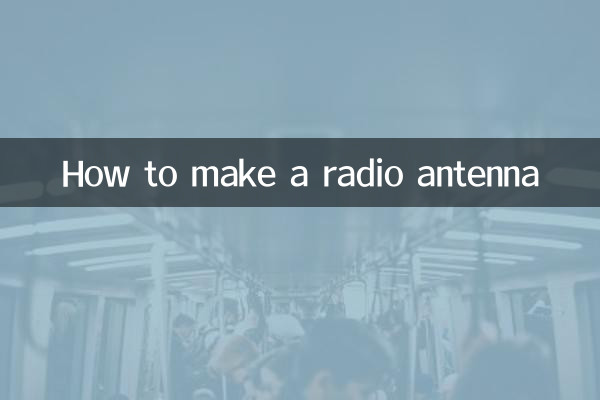How to make a radio antenna
In today's era of information explosion, although radio is no longer a mainstream media device, there are still a group of enthusiasts who are keen on DIY radio antennas to improve reception or explore the fun of radio. This article will combine the hot topics and hot content on the Internet in the past 10 days to introduce you in detail how to make a simple radio antenna and provide structured data for reference.
1. Hot Topics and Hot Content

Based on recent web searches and social media discussions, here are the hot topics and content about radio antenna production:
| hot topics | Hot content |
|---|---|
| DIY radio antenna | How to make an efficient radio antenna from simple materials |
| radio amateur | Amateur radio enthusiasts share antenna making experience |
| Signal reception optimization | How to improve radio signal reception with an antenna |
| Utilization of environmentally friendly materials | Creative ways to use waste items to make radio antennas |
2. Radio antenna production steps
Making a simple radio antenna is not complicated. Here are the detailed steps:
1. Prepare materials
| Material name | quantity | Remark |
|---|---|---|
| copper wire | 5-10 meters | Diameter 1-2mm |
| Insulating tape | 1 volume | for fixing and insulating |
| connector | 1 | For connecting radio |
| support rod | 1 stick | Length 2-3 meters |
2. Production steps
(1) Straighten the copper wire and cut it to the required length. Generally speaking, the length of the antenna is related to the receiving frequency, and the recommended length is 1-2 meters.
(2) Fix one end of the copper wire to the support rod and secure it with insulating tape. Make sure the copper wire is insulated from the support rod.
(3) Connect the other end of the copper wire to the connector, and then connect the connector to the antenna interface of the radio.
(4) Erect the support pole outdoors or near a window to ensure that the antenna can receive more signals.
3. Precautions
(1) The antenna should be kept as far away from electronic devices as possible to avoid interference.
(2) If the signal reception effect is not good, you can try to adjust the length or position of the antenna.
(3) When using waste materials to make antennas, ensure that the materials have good conductivity.
4. Popular DIY antenna types
According to online discussions, the following are the recently popular DIY antenna types and their characteristics:
| Antenna type | Features | Applicable scenarios |
|---|---|---|
| long wire antenna | Simple and easy to make, wide reception range | outdoors or open area |
| loop antenna | Strong anti-interference ability | Urban or signal complex areas |
| folded dipole antenna | Portable and suitable for mobile use | Travel or temporary use |
5. Summary
Through the above steps and content, you can easily make a simple radio antenna and adjust the type and length of the antenna according to your needs. DIY radio antennas not only improve signal reception, but also allow you to experience the fun of making them. Hope this article helps you!

check the details

check the details